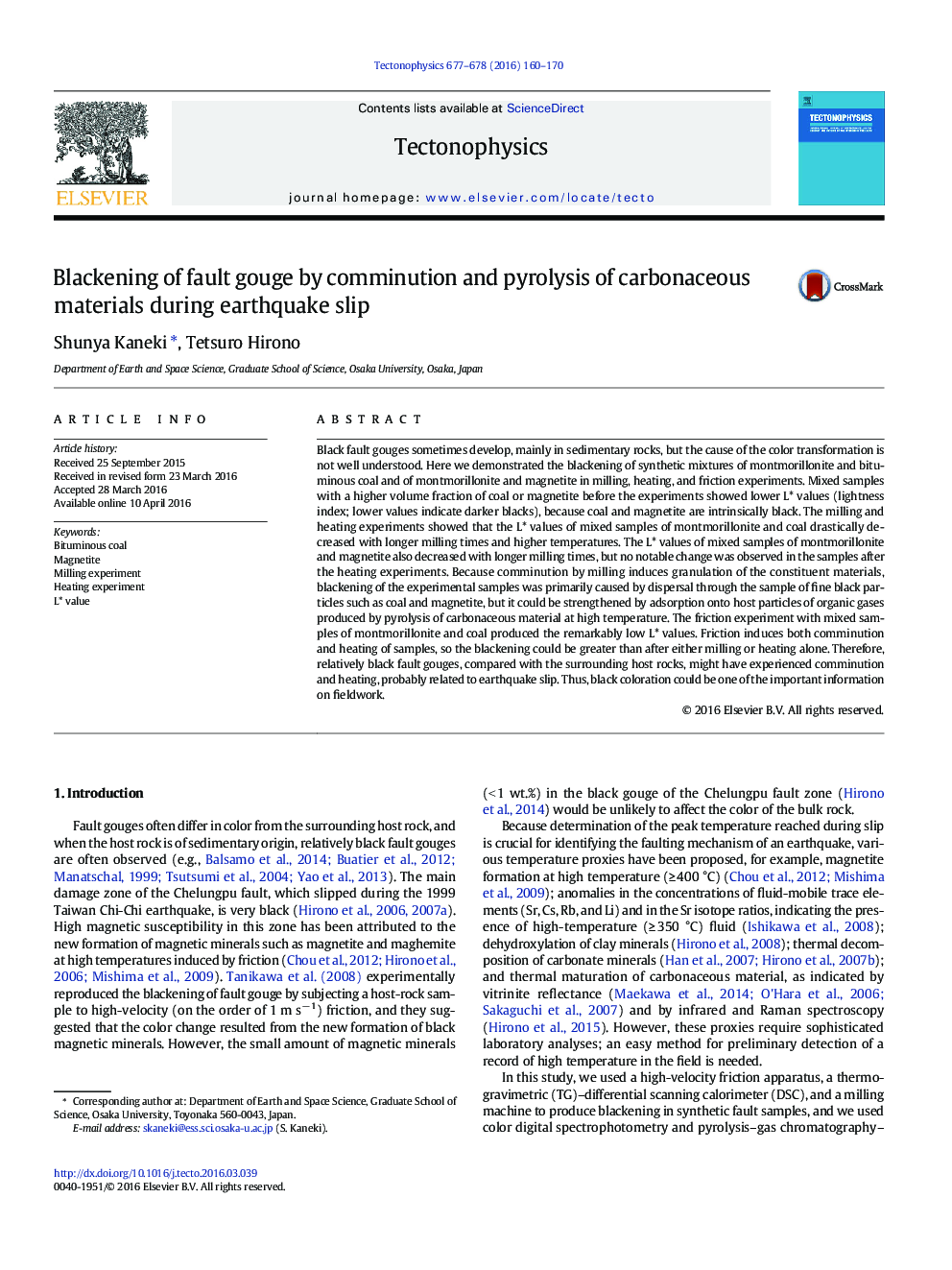| کد مقاله | کد نشریه | سال انتشار | مقاله انگلیسی | نسخه تمام متن |
|---|---|---|---|---|
| 4691351 | 1636720 | 2016 | 11 صفحه PDF | دانلود رایگان |
• L* values decrease with friction, milling and heating treatments.
• Blackening is caused by comminution and pyrolysis of carbonaceous materials.
• Blackening of fault rock could be a new proxy for earthquake slip.
Black fault gouges sometimes develop, mainly in sedimentary rocks, but the cause of the color transformation is not well understood. Here we demonstrated the blackening of synthetic mixtures of montmorillonite and bituminous coal and of montmorillonite and magnetite in milling, heating, and friction experiments. Mixed samples with a higher volume fraction of coal or magnetite before the experiments showed lower L* values (lightness index; lower values indicate darker blacks), because coal and magnetite are intrinsically black. The milling and heating experiments showed that the L* values of mixed samples of montmorillonite and coal drastically decreased with longer milling times and higher temperatures. The L* values of mixed samples of montmorillonite and magnetite also decreased with longer milling times, but no notable change was observed in the samples after the heating experiments. Because comminution by milling induces granulation of the constituent materials, blackening of the experimental samples was primarily caused by dispersal through the sample of fine black particles such as coal and magnetite, but it could be strengthened by adsorption onto host particles of organic gases produced by pyrolysis of carbonaceous material at high temperature. The friction experiment with mixed samples of montmorillonite and coal produced the remarkably low L* values. Friction induces both comminution and heating of samples, so the blackening could be greater than after either milling or heating alone. Therefore, relatively black fault gouges, compared with the surrounding host rocks, might have experienced comminution and heating, probably related to earthquake slip. Thus, black coloration could be one of the important information on fieldwork.
Journal: Tectonophysics - Volumes 677–678, 23 May 2016, Pages 160–170
